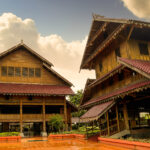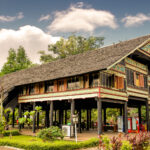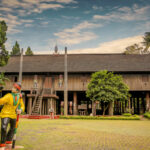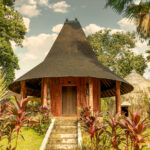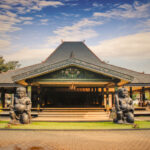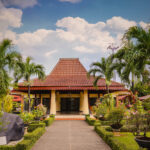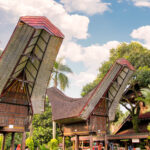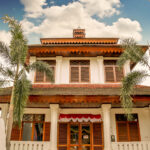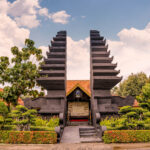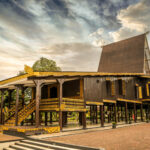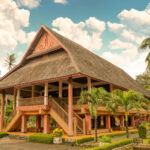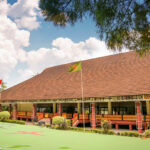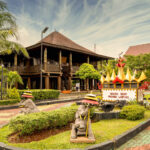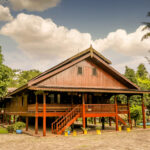Silamo!
West Nusa Tenggara (NTB), a land of peace and serenity, warmly embraces those seeking tranquility amid the bustle of city life. Lombok and Sumbawa Islands each tell a beautiful story, home to three native ethnic groups: the Sasak people on Lombok Island, the Mbojo people in Bima Regency, Dompu Regency, and Bima City, and the Samawa people in Sumbawa and West Sumbawa Regencies.
The NTB Pavilion at TMII introduces the historic Sumbawa royal palace dating back to 1825. Though a replica, the Dalam Loka Samawa Palace presents an authentic impression through intricate architectural details. It includes several rooms such as the Luyuk Agung for customary ceremonies and deliberations, the royal sleeping quarters for the sultan and queen, the family chamber, and a back area functioning as the kitchen. Built entirely from teak wood, the two-story palace rests on 99 pillars symbolizing the Asmaul Husna (the 99 Names of Allah). Its twin roof structure and low-gated entrance represent the dignity of civilization.
The first floor of the palace exhibits the arts and cultures of NTB’s native ethnic groups, including traditional clothing, pottery, songket fabric, silver and brass crafts, as well as tools for hunting and fishing. Visitors may also witness reenactments of traditional Sasak ceremonies, such as birth, circumcision, engagement, wedding processions using the traditional barong tengkok palanquin, and funerals.
The upper floor houses fascinating historical artifacts such as gamelan instruments, weaving tools, woven crafts, and various traditional household items of the Sasak people. Visitors can explore three Sasak rice barns (samba or pantek), a meeting hall with Mbojo (Bima) architectural design, traditional gateways, the Bumi Gora performance stage representing Sasambo culture, and a prayer house complete with the iconic Bima mosque tower. Each element adds a unique layer to the exploration of NTB’s pavilion area.
DID YOU KNOW?
A visit to NTB is not complete without tasting Ayam Taliwang, the region’s renowned culinary specialty, now beloved throughout the Indonesian archipelago. Legend has it that this dish was once reserved for royal families, but over time, its irresistible flavors became accessible to the public. Served either fried or grilled, Ayam Taliwang offers a harmonious blend of bold local spices that delight the palate.





